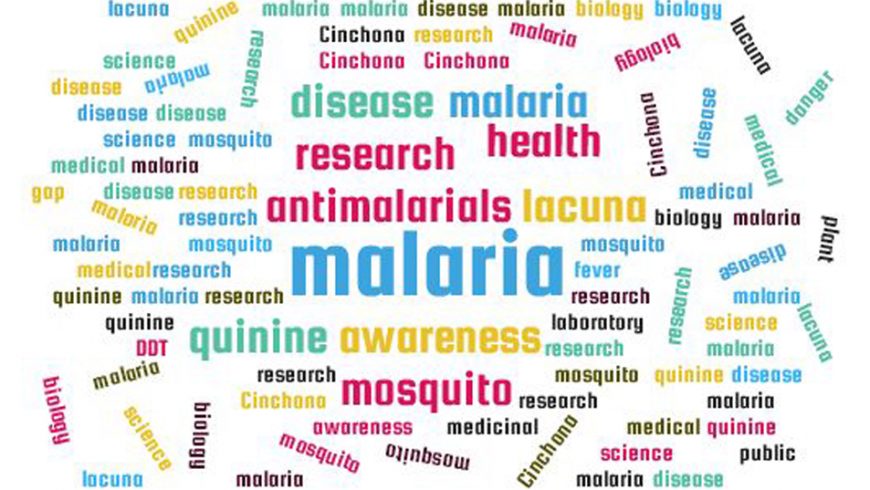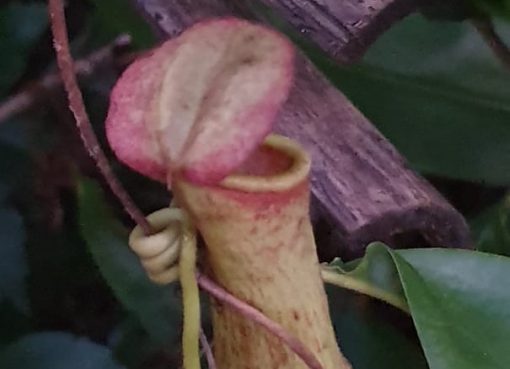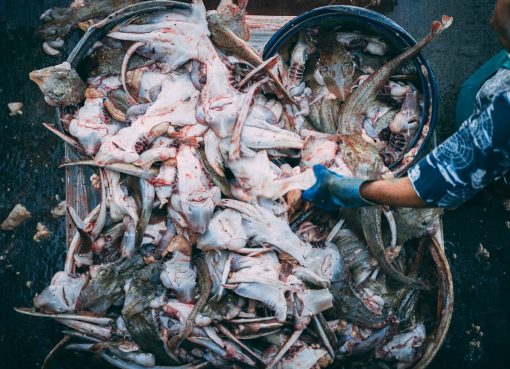Introduction : Malaria is one of the catastrophic vector-borne diseases that has affected the public health and socio-economic status of many tropical and subtropical countries including India [1]. In Africa alone, US$2 billion economic loss was recorded in 1997 due to high malaria burden [2]. As per WHO report published in 2014, about 198 million cases of malaria infection and an estimate of 584000 deaths were documented (World Malaria Report, 2014, WHO). Although, every year a huge amount of revenue and manpower are engaged in malaria eradication programme, controlling this disease has not become possible yet. After the discovery of Plasmodium species and the mosquito vector, scientific community is constantly putting efforts to eradicate this vector-borne disease by targeting either the parasite or the vector. Huge number of reports on laboratory-based works on new antimalarial chemotherapeutics either sourced from nature or synthetically designed is getting piled up every year. However, after artemisinin, no further potent entity has been discovered. With the passing of time, the parasite becomes more resistant against the current antimalarial drug molecules. Although, various control and preventive measures have been adopted to eradicate malaria vectors, owing to the resistance acquired against the control strategies by the vector mosquitoes, these strategies have not worked efficiently and outbreaks of malaria has remained unavoidable.
The present correspondence enlightens some crucial aspects regarding the increasing malaria burden as well as the gaps and lacunae in malaria control based research.
1. Increasing resistance of Plasmodium species against the current antimalarials
Due to complex life cycle of the parasite, it has become resistant to most of the current antimalarials. Resistance of Plasmodium falciparum to chloroquine was first reported in parts of Southeast Asia and South America in the late 1950s, and became widespread by the 1980s. [3]. Amodiaquine and artesunate combination was adopted as the first-line treatment by several countries [4]. Plasmodium strains resistant to amodiaquine were also reported in Tanazania [5]. To encounter chloroquine-resistant malaria, another combination of sulfadoxine-pyrimethamine was also used. In the year 1979, the initial findings of resistance to sulphadoxine-pyrimethamine combination therapy was also reported from the Karbi Anglong district of Assam and later documented in Arunachal Pradesh, India [6]. Unsolved resistance problem of the tiny parasite against almost all the available drug molecules has drawn the attention of the scientific community. Artemisinin combination therapy (ACT) was recommended to mitigate the problem. However, artemisinin combination therapy also failed in many parts of the world. Artesunate-mefloquine resistance was observed in Cambodia–Thailand Border [7]. Another study reported in 2014 demonstrated that treatment of artesunate-sulfadoxine-pyrimethamine failed in NE India [8]. Likewise, dihydroartemisinin–piperaquine resistance was also reported from Cambodia [9]. Several factors contribute to drug resistance of the parasite. This may include the degree of resistance conferred by the genetic changes, number of parasites exposed to the drug, concentrations of drug exposed to the parasite and the pharmacokinetics and pharmacodynamics of the antimalarial drugs.
2. Medicinal plant based research mostly confined at the laboratory level only
Various in-vitro and in-vivo studies have been carried out to find out new anti-malarial potentials sourced from nature. The quest for new antimalarial compounds from natural sources is drawing interest because of the fact that the two potent antimalarial compounds -quinine and artemisinin were of plant origin [10]. After tremendous success of quinine isolated from bark of Cinchona species in 1820, many plants were explored by scientific community to fight against malaria. Another milestone was reached when the most potent antimalarial drug was developed from the Chinese plant Artemisia annua. After artemisinin, though no new potent antimalarial compound has been isolated from plants, large numbers of plants have been subjected to bioassay and a few plants have responded with promising results [11-13].
In this context, one most crucial point is the complete laboratory investigation required for isolation, purification and identification of lead molecule. Folklore knowledge based plants keep much promise for further work in the field of malaria but in majority of the cases, this is validated to the level of crude extract or fraction. This may be due to lack of proper scientific investigation such as collection of the materials, identification, processing of the materials, extraction procedure error or lack of funds (in developing countries). If proper scientific investigation is carried out further on the partially explored plant with antiplasmodial activity, it may lead to a great success in respect of developing new antimalarial compounds.
3. Lack of proper validation of traditional knowledge systems and exploration of new antimalarials
Traditional medicine system plays an important role in curing many diseases including malaria. Proper scientific validation of traditional knowledge systems using plant or animal products or other natural origin substances in curing malaria still require large scale efforts. Many a times, it is observed that due to lack of proper study and documentation over the natural antimalarial sources, the ethnic knowledge system with the passage of time becomes extinct. Another important drawback is the lack of proper flow of ethno information. In this context, focus should be drawn to tribal community residing areas, where traditional antimalarial practices are going on since ancient time. Establishment of regional Ethno pharmaceutical Centres especially on “exploration of antimalarial plants” should be encouraged. This may lead to the development of intense collaborative research at international level.
4. Gaps in proper vector control strategy
After Ronald Ross’s discovery unveiling the transmission of malaria by mosquito vector, vector control strategy was regarded as one of the most powerful tools in malaria eradication programme. Different control measures were followed, where mosquito species were targeted against malaria. Before the use of DDT, certain other biological measures like use of larvivorous fish-oil, paris green etc. were mostly used in malaria vector control. In 1939, Paul Mueller discovered the insecticidal property of DDT and thereafter, DDT for the first time was used as DDT-IRS in 1942 for controlling malaria vector. Though DDT-IRS based control measure was achieved a great success, but later on emergence of resistance was reported from many regions of the world. To tackle the problem of resistance against the DDT-IRS based control measures, certain other control strategies such as insecticide treated nets (ITNs), long lasting insecticide treated nets (LLINs) were used globally to control the disease. However, these also failed in successfully eradicating the disease. Vector resistance against other chemical insecticides such as HCH/dieldrin, malathion, pirimiphos methyl, fenitrothion, carbamates (propoxure and bandiocarb) and synthetic pyrethroids (deltamethrin, cyfluthrin and lambdacyhalothrin) were also reported in many parts of the globe .To overcome the drawbacks of chemical control and the threat of resistance, some new biological control approaches were introduced. Larvivorous fish (Gambusia affinis) was widely used. But due to its negative effect on native fauna, further use of it was not encouraged. Knowledge of subspecies and behavioural changes of the vector mosquito should be monitored regularly. This will require skilled man-power and instrumental sophistication. Environmental factors that contribute in resistance should also be checked regularly. Use of ITNs and LLINs also gained remarkable success. But adequate supply of ITNs and LLINs are not there in many parts of the world. Public awareness in remote areas regarding the use of insecticide treated nets should be upgraded. Other control strategies like use of genetically modified mosquito, sterile insect technique, Wolbachia approach yet to receive full flagged practical implementation in controlling malaria vector. Scheme such as use of wire screen in the doors and windows in malaria epidemic areas might help in disease control.
Newer approaches like more and quick exploration of different biological agents like plant products, marine organisms, algae and other microbes, etc. should be encouraged. Many natural entities claimed by people as having traditional mosquitocidal property are yet to be explored. Formulation of plant products with bacteria and other microbes may also act as having potent mosquitocidal property.
5. Lack of detail survey of the malaria endemic area with special emphasis on awareness to the masses
Geographical as well as the socio-economic survey of the malaria epidemic areas are another concern in controlling malaria. Burden of malaria was found to be enhanced by several other factors which are generally neglected during control programme. Socio-economic status of a region is directly related to public awareness. The problem becomes more threatening due of lack of proper knowledge regarding the disease and its control measures in the economically backward section of the society.. For example, reconstruction of household infrastructure such as leaking pipe system, taps, drainage system, which give a suitable environment for breeding mosquito vectors are generally neglected. Knowledge regarding the breeding site of vector mosquitoes amongst the layman is often insufficient, which plays as a key negative factor in controlling the disease. The area where malaria prevalence is very high should be regularly examined by trained persons and people should be encouraged for regular blood testing and proper maintenances of surroundings. Although the rural and economically backward areas are often encounter these problems, with increasing population, urban areas are also being badly affected. Mosquito vectors often reside and breed in highly polluted areas such as public toilets and tanks. Although, proper maintenance of these sites may not be possible always, awareness programme on cleanliness should be organized in the localities. Moreover, upgradation of the life style, right to education, knowledge regarding the malaria burden are the key factors in malaria control. In a country like India, where malaria outbreaks are still often reported and also in other malaria prone African countries, where malaria is a highly endemic disease, education system could play an important role and better outcome may be expected by introducing academic curriculum on malaria or vector borne diseases at school level.
Conclusion: In spite of the fact that every year a large amount of grant and manpower are engaged for malaria prevention and treatment, successful elimination of malaria has not yet been possible to the extent desired. Fatal outbreak of malaria in several regions of the world still comes into light, which suggests the urgency of changing and improving malaria control strategies. Resistance biology of the parasite, improvement in the vector control strategies, practical implantation and further validation of plant-based antimalarial research along with traditional knowledge conservation and public awareness might bring some new hopes towards making a malaria free world.
References:
-
Qayum A, Arya R, Kumar P, Lynn AM. Socio-economic, epidemiological and geographic features based on GIS-integrated mapping to identify malarial hotspots. Malaria. 2015; 14:192.
-
Okorosobo T, Okorosobo F, Mwabu G, Orem JN. Economic Burden of Malaria in six Countries of Africa. European Journal of Business and Management 2011; 3(6): 43-62.
-
Farooq U, Mahajan RC. Drug resistance in malaria. J Vect Borne Dis. 2004; 41: 45–53.
-
Ndeba PM, D’Alessandro U, Hennart P, Donnen P, Porignon D, Balaluka GB, et al. Efficacy of Artesunate Plus Amodiaquine for Treatment of Uncomplicated Clinical Falciparum Malaria in Severely Malnourished Children Aged 6–59 Months. Democratic Republic of Congo. J Clin Exp Pathol. 2012; S3:005. Doi:10.4172/2161-0681.S3-005.
-
Gadalla NB, Tavera G, Mu J, Kabyemela ER, Fried M, Duffy PE, et al. Prevalence of Plasmodium falciparum anti-malarial resistance-associated polymorphisms in pfcrt, pfmdr1 andpfnhe1 in Muheza, Tanzania, prior to introduction of artemisinin combination therapy. Malaria Journal. 2015; 14:129.
-
Mohapatra PK, Sarma DK, Prakash A, Bora K and Ahmed MA. Molecular Evidence of Increased Resistance to Anti-Folate Drugs in Plasmodium falciparum in North-East India: A Signal for Potential Failure of Artemisinin Plus Sulphadoxine-Pyrimethamine Combination Therapy. PLoS ONE. 2014; 9(9).
-
Amaratunga C, Sreng S, Suon S, Phelps ES, Stepniewska K, Lim P, et al. Artemisinin-resistant Plasmodium falciparum in Pursat province, western Cambodia: a parasite clearance rate study. Lancet Infect Dis 2012; 12:851–858.
-
Mishra N, Kaitholia K, Srivastava B, Shah NK, Narayan JP, Dev V, et al. Declining efficacy of artesunate plus sulphadoxine-pyrimethamine in northeastern India. Malaria Journal. 2014 13:284.
-
Amaratunga C, Lim P, Suon S, Sreng S, Mao S,Sopha C, et al. Dihydroartemisinin–piperaquine resistance in Plasmodium falciparum malaria in Cambodia: a multisite prospective cohort study. The Lancet InfectiousDiseases. 2016. Doi:10.1016/S1473-3099(15)00487-9.
-
Balunas MJ, Kinghorn AD. Drug discovery from medicinal plants. Life Sciences 78 2005; 431 – 441. doi:10.1016/j.lfs.2005.09.012.
-
Carvalho LH, Brandao MGL, Santos FD, Lopes JLH, Krettli AU. Antimalarial activity of crude extracts from Brazilian plants studied in vivo in Plasmodium berghei infected mice and in vitro against Plasmodium falciparum in culture. Braz.J. Med. Biol. Res 1991; 24: 1113–1123.
-
Agbedahunsi JM, Elujoba AA, Makinde JM. and Oduda AMJ. Antimalarial activity of Khaya grandifoliola stem bark. Pharm. Biol 1998; 36: 8–12
-
Francois G, Assi LA, Holenz J, Bringmann G. Constituents of Picralima nitida display pronounced inhibitory activities against asexual erythrocytic forms of Plasmodium falciparum in vitro. J. Ethnopharmacol 1996; 54: 113–117.
Authors: Mohan Chandra Kalita and Nilakshi Gohain Department of Biotechnology, Gauhati University, Guwahati, Assam, India




